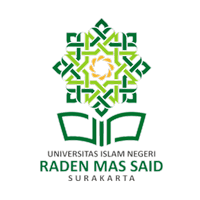Augmented Reality as an Innovation in Arabic Language Learning: a Case Study in Ma’arif Islamic Junior High School Andong Boyolali
Contributors
Suharsono
Mardika Novianti
Keywords
Proceeding
Track
General Track
License
Copyright (c) 2025 International Conference on Cultures & Languages

This work is licensed under a Creative Commons Attribution-NonCommercial-NoDerivatives 4.0 International License.
Abstract
This research aims to describe the impact of the implementation of Augmented Reality (AR) technology-based learning media for teachers and students at Al Ma'arif Andong Junior High School. This study includes field research with a qualitative case study approach. Data collection techniques use observation, interviews, and documentation. Data analysis uses data reduction, data presentation, and drawing conclusions (data triangulation). The results of this study indicate that the implementation of augmented reality media in Arabic language learning at Al Ma'arif Andong Islamic High School has had a significant impact on teachers and students. Among them: School partners have given a positive response to AR learning media and will disseminate it on a wider scale. Teachers find it easier to teach and have an overview of the use of AR media in classroom learning, students become more enthusiastic in participating in class learning and can increase student learning motivation, especially in Arabic lessons. The limitations of this study are the lack of infrastructure that supports learning using AR media, many teachers who are less competent in using AR media-based technology. This research contributes to the development of Arabic language education by strengthening IT-based learning media innovation for teachers at Al Ma'arif Islamic High School in Andong through Augmented Reality-based learning. It also fosters students' enthusiasm for learning at Al Ma'arif Islamic High School in Andong Boyolali.

